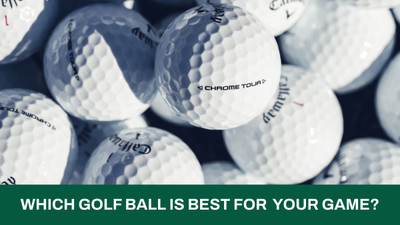Which Golf Ball Is Best For Your Game?
Posted by GolfBox on 21st Mar 2024
Ever wondered why golf balls can look so similar yet feel and play so differently?
Or why some balls are seemingly more suited to beginner golfers while others are targeted at better players?
Playing the right golf ball can help you improve faster, lower your scores and make the game a whole lot more fun.
If you want to see which balls will suit you, read the GolfBox 2023 Golf Ball Guide which details the best golf balls for beginners, and the best golf balls for low handicappers.
But if you are compelled to scratch the surface and learn about how compression, spin, and the layers of a golf ball influence performance, read on.
You’ll have a ball, we promise.
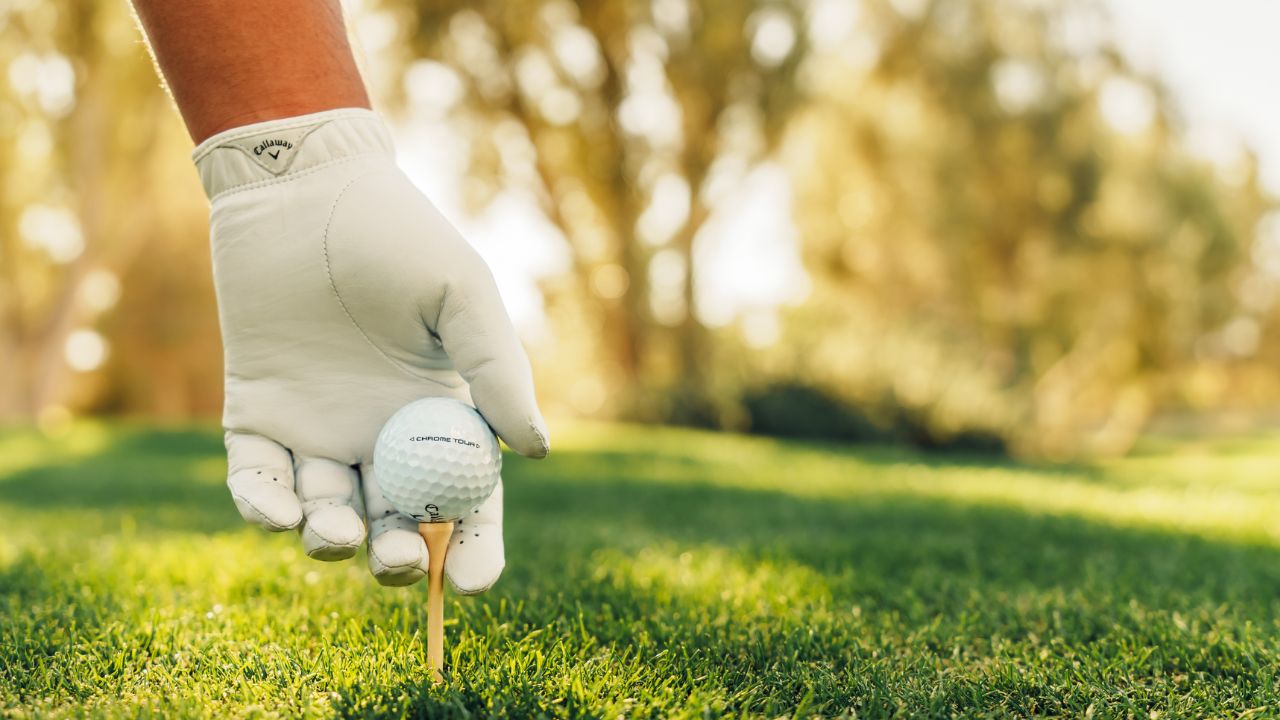
HOW DIFFERENT TYPES OF GOLF BALLS INFLUENCE PERFORMANCE
On the outside golf balls look much the same. They’re all the same size, all have dimples and are, for the most part, either white or yellow in colour.
But as the old cliché suggests, it’s what’s on the inside that really matters.
Every golf ball has a core — an inner sphere made from a hard synthetic rubber — and a cover, which is the outermost covering of the golf ball.
Balls with only a core and a cover are known as two-piece balls.
Premium multi-layer balls have between one to three extra layers, known as mantle layers.
And depending on the number of additional layers, they are referred to as three-piece, four-piece or five-piece golf balls.

TWO-PIECE GOLF BALLS
Two-piece balls have two components: a large, solid core and an external cover. They maximise distance, are cheap and are generally suited to beginners and high handicappers. They can be either hard or soft and generally perform best for slower swing speeds. Example: TaylorMade Distance+, Wilson DUO Soft+
THREE-PIECE GOLF BALLS
Three-piece balls have an extra layer, between the core and cover, that is responsible for delineated spin and speed performance throughout the bag. The extra layer means the ball will spin less for the long game, to maximise distance, and spin more with wedges and short irons for better stopping power and a refined touch on and around the greens. Three-piece balls can be soft or firm but generally spin more and will suit better players with faster swing speeds. Example: Titleist Pro V1, Bridgestone Tour B X
FOUR-PIECE GOLF BALLS
Four-piece balls are usually firmer than a three-layer ball, with the multiple layers between the core and cover producing more specific spin throughout the bag. Four-piece balls will benefit faster swing speeds. Example: Titleist Pro V1x, Callaway Chrome Soft
FIVE-PIECE GOLF BALLS
Five-piece balls perform in much the same way as a three or four-piece ball but the additional layer often provides a softer feel at impact and more mid iron spin. Example: TaylorMade TP5, TaylorMade TP5x
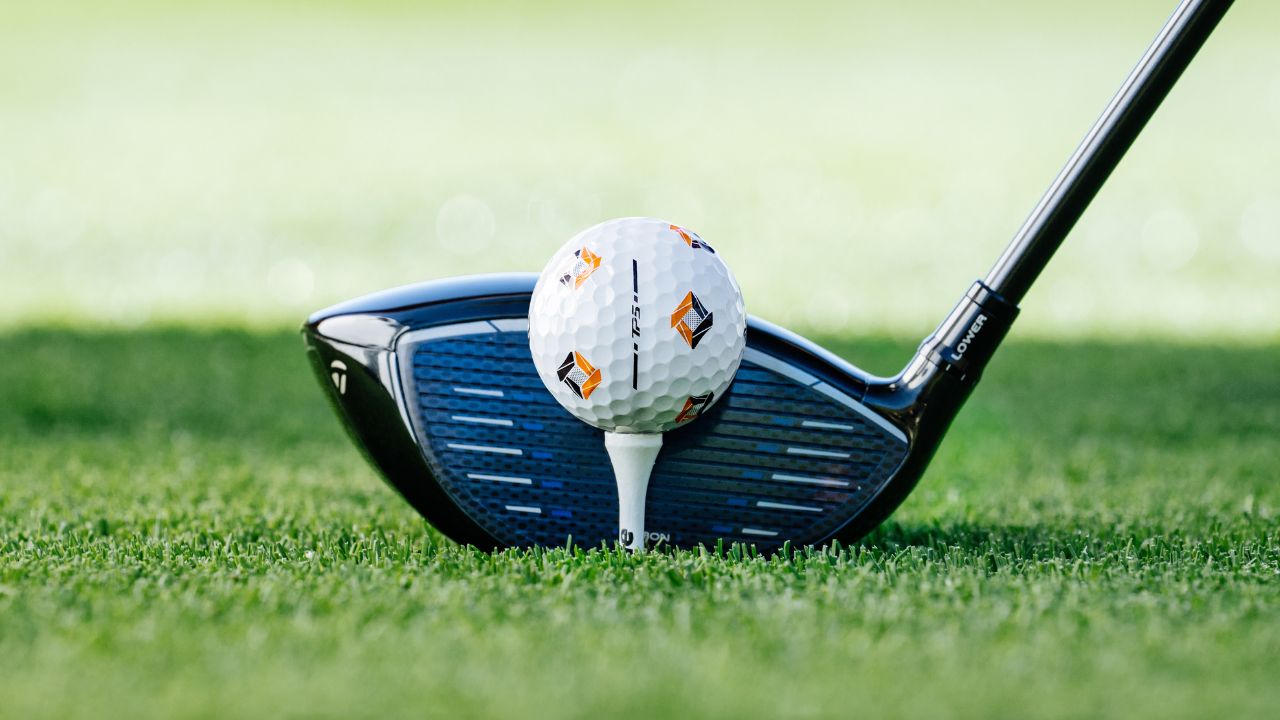
WHAT IS GOLF BALL COMPRESSION?
A golf ball’s compression is a big factor on the overall feel of a golf ball.
A ball’s compression rating reflects how much the ball deflects at impact and is measured on a scale between 0 to 200.
A compression rating of 0 represents 5mm of deflection at impact while a compression rating of 200 is zero deflection.
Soft balls are between 35-60 on the compression scale while the firmest balls have a compression somewhere in the vicinity of 100-110.
WHAT ARE HIGH COMPRESSION GOLF BALLS?
High compression golf balls (100+) offer a firmer feel because they don’t deflect and deform as much at impact as a soft compression golf ball.
While feel is a personal preference, higher compression balls suit players with faster swing speeds (above 90mph) because they can naturally compress the ball more at impact because of the power in their golf swing.
High compression golf balls are generally an excellent choice for better players because they are able to transfer club head speed into distance more efficiently.
However, there is a payoff because firmer compression balls often won’t spin as much around the greens as a softer compression ball.
WHAT ARE LOW COMPRESSION GOLF BALLS?
Low compression golf balls (<65) have a much softer feel than high compression golf balls because they deflect more readily.
Golfers with slower swing speeds (below 65mph) will gain the most distance playing a low compression “soft” ball.
The softer compression creates a more flexible golf ball, which leads to a spring-like effect off the clubface that helps maximise distance for slower swing speeds.
Low compression golf balls also have a softer feel.
WHAT ARE MID COMPRESSION GOLF BALLS?
Mid compression golf balls are the goldilocks golf ball: not too firm and not too soft, which is just right for many golfers.
They are the most versatile because they provide a softish feel without hurting distance like a low compression ball would.
Both fast and slow swing speeds will be able to play a mid compression ball without sacrificing too much performance in both spin and distance departments.

WHAT IS GOLF BALL SPIN?
Golfers have been trying to control the spin of the ball ever since the golf was invented.
There are two types of spin in golf: back spin and side spin.
Back spin is what helps lift the ball into the air; generate enough of it at impact and the ball will often spin backwards when it hits the green.
Back spin is great for control in the short game but too much of it will reduce carry distance with longer clubs — which is less than ideal when hitting tee shots.
Side spin is also problematic.
An open or closed clubface at impact will impart side spin on the ball, which makes a shot curve through the air (a.k.a. a hook or slice, depending on the amount of side spin).
WHAT ARE LOW SPIN GOLF BALLS?
Two-piece golf balls are usually the lowest spinning balls on the market and, as such, extract as much distance as possible.
Because of their low-spinning properties, they will also lessen the effects of a hook or slice.
But it comes at the cost; low spin balls won’t spin as much, or stop as fast, on the greens.
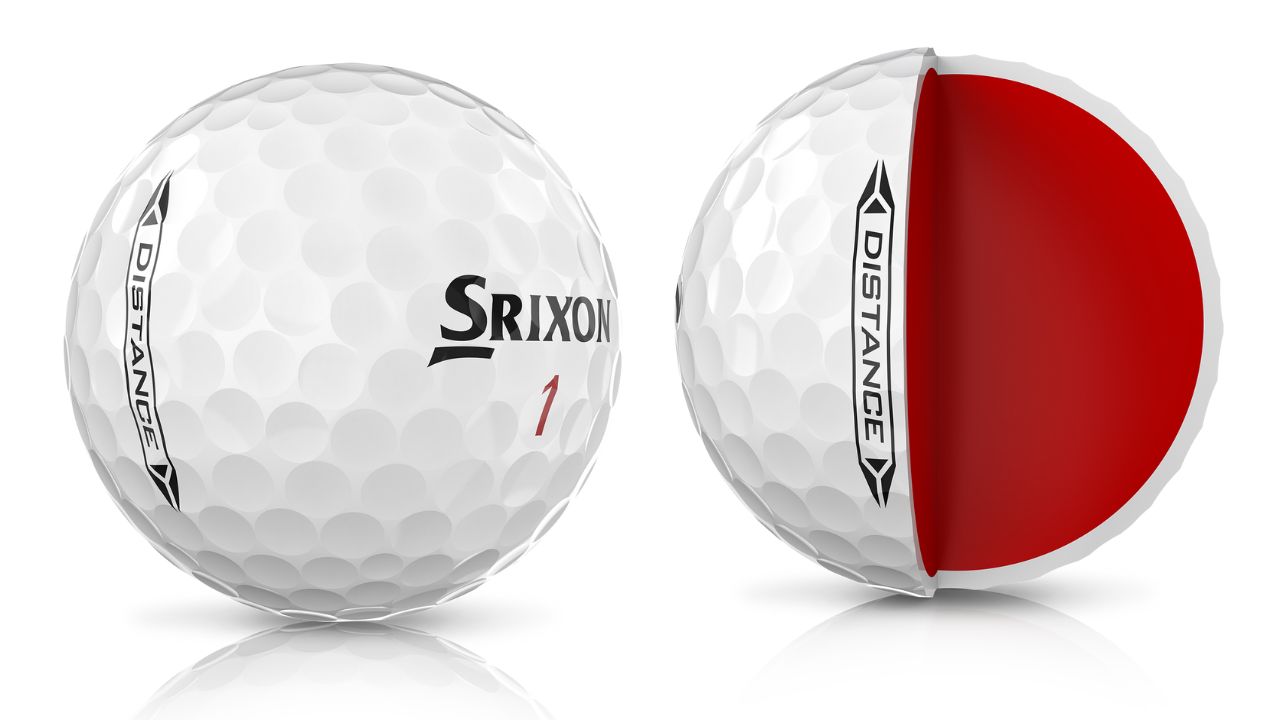
WHAT ARE HIGH SPIN GOLF BALLS?
Multi-layer golf balls generally spin more than two-piece balls.
They usually feature a cast urethane cover that is soft and spinny.
But it’s the interaction of the layers inside the golf ball that also ratchets up spin rates
when you need it (with short irons) and cuts spin when you don’t (with the driver and long irons).
Multi-layer balls provide the ultimate blend of distance and stopping power.
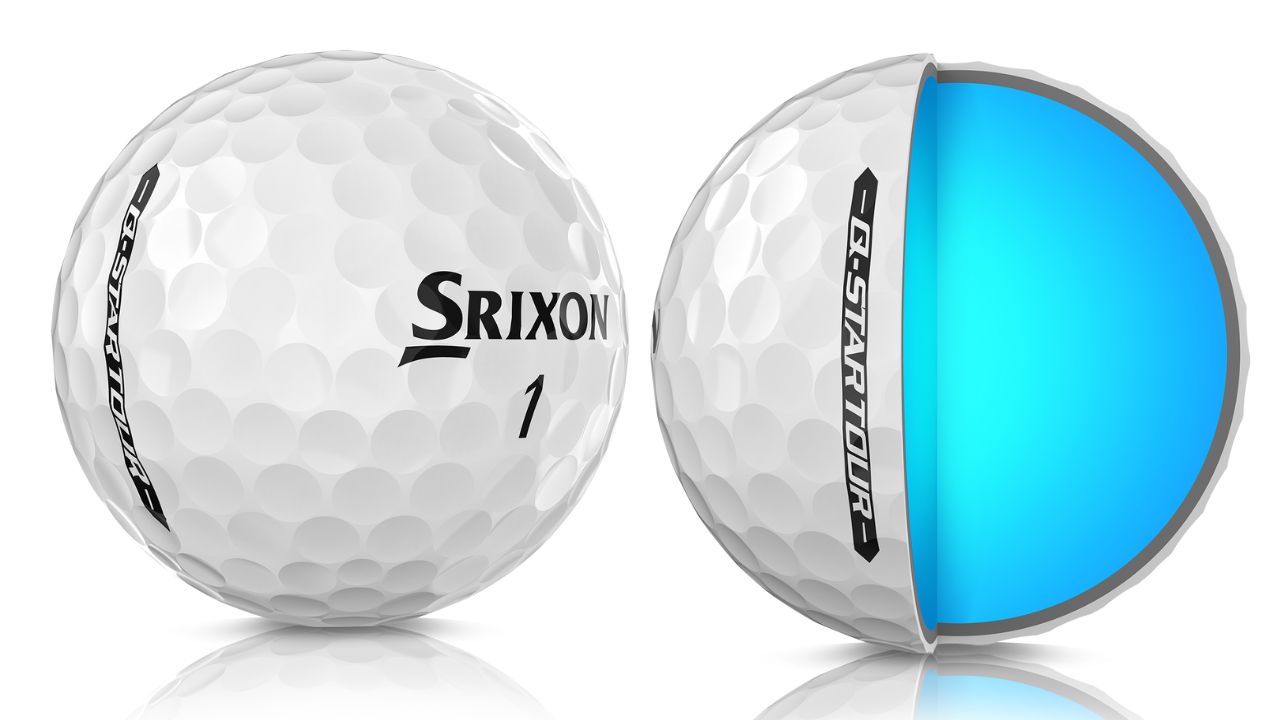
WHY YOU CAN’T HAVE EVERYTHING IN A GOLF BALL
Creating a ball to suit a particular golfer inevitably involves several trade offs between feel, distance and spin.
As a rule:
- A ball that spins on approach shots won’t maximise distance to the fullest.
- A ball engineered for long game distance won’t spin as much around the green.
- A ball that feels soft will generally spin quite well around the greens.
- A ball that feels soft won’t generate distance for high swing speeds.
- A ball with high compression should suit higher swing speeds.
HOW TO CALCULATE YOUR SWING SPEED
Swing speed isn’t quite everything when it comes to choosing a golf ball but can provide an indication of which compression ball to use.
There are a few ways to work out your swing speed:
Spend some time on a launch monitor
Many golf facilities use a GC Quad or Trackman launch monitor, which will provide the most accurate assessment of swing speed.
Use a personal launch monitor
Handheld units like the Garmin R10 are relatively cheap and provide a decent level of accuracy when it comes to measuring a golfer’s swing speed.
Do your own rough calculation
If you know how far your drives carry (in metres) you can work out a rough estimate by dividing the distance by 2.1. For example, if your drive carries 220 metres divide it by 2.1 — your estimated swing speed will be 104mph.

WHICH GOLF BALLS ARE THE BEST?
TWO-PIECE BALLS
Two-piece balls won’t spin as much as their multilayer colleagues, which has advantages and disadvantages. It promotes straighter ball flights by reducing side spin but, on the flip side, limits stopping power on the green with less back spin.
MULTI-LAYER BALLS
Three-piece, four-piece and five-piece balls spin more than a two piece ball and offer a more progressive spin profile throughout the bag. They won’t spin as much with the driver and longer clubs but will spin more with shorter clubs. It means more distance for the long game and more spin and control with the short irons.
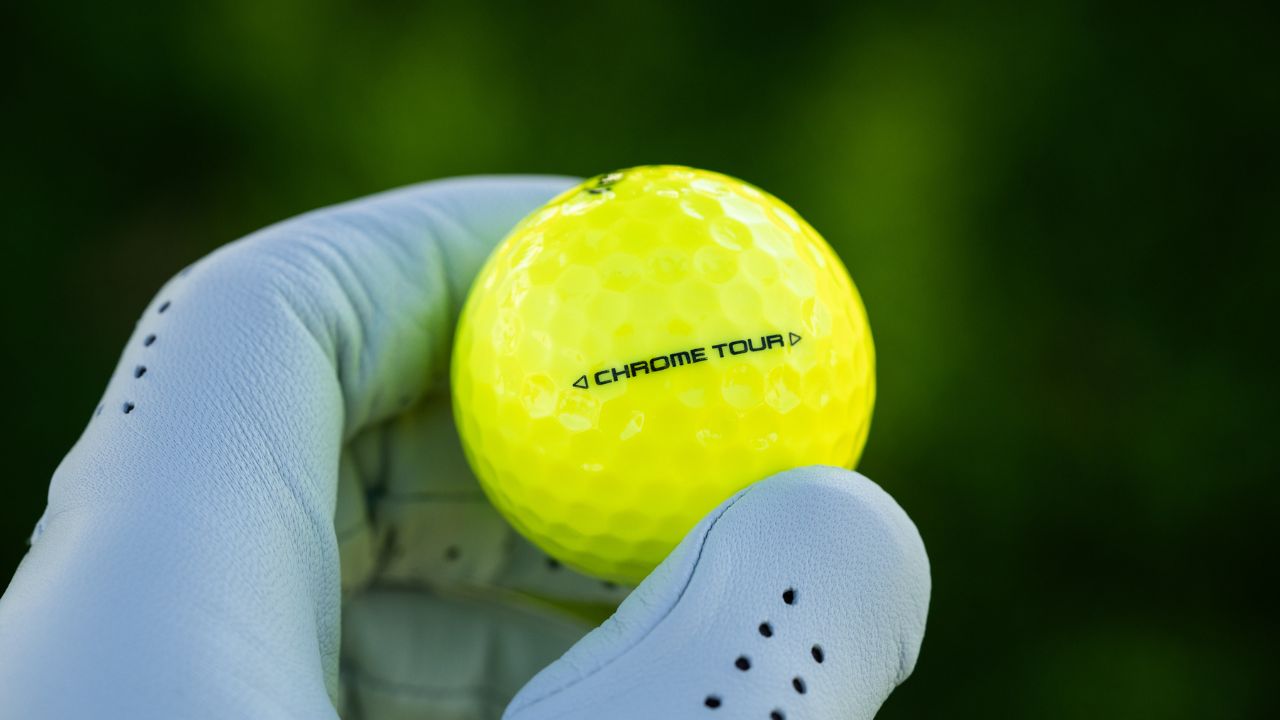
BEST BALLS FOR BEGINNER GOLFERS
Given that waywardness is just a part of learning the game, beginner golfers would probably be best suited to playing a two-piece golf ball.
They are the cheapest balls available and, as such, it’s not a big deal if you lose a sleeve or two during a round.
Two-piece balls also provide good distance and their low-spinning characteristics will straighten up ball flights by reducing the impact of a hook or slice.
BEST BALLS FOR HIGH HANDICAPPERS
Two-piece golf balls are probably best suited to high handicappers, although multi- layer balls can be an option for high handicappers with high swing speeds.
But with a tendency to lose balls, a high handicapper might opt for the more budget-friendly option of a two-piece ball.
BEST GOLF BALLS FOR SLOW SWING SPEEDS
Two-piece balls that optimise spin rates to increase carry distance are best suited to golfers with a slow swing speed.
Increasing carry distance will help golfers with slow swing speeds to maximise distance and make holes shorter.
BEST GOLF BALLS FOR LOW HANDICAPPERS
Multi-layer balls will meet the requirements of low handicap golfers best.
The spin and speed profile of three-piece, four-piece and five-piece balls will help maximise performance throughout the bag by boosting distance in the bottom end of the bag and increasing spin at the top end of the bag.

